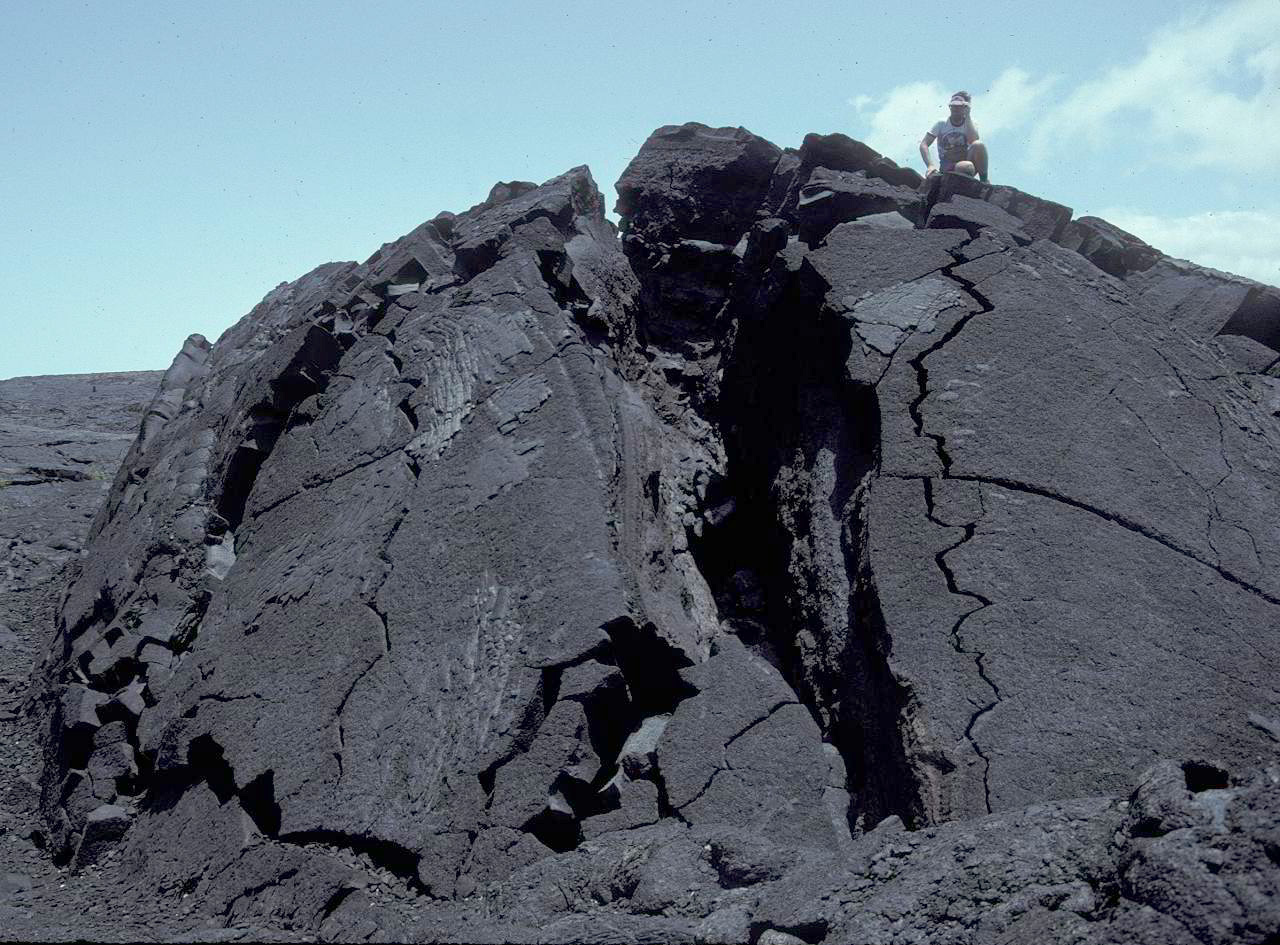Pressure ridge (lava) on:
[Wikipedia]
[Google]
[Amazon]
 In
In
 In
In volcanology
Volcanology (also spelled vulcanology) is the study of volcanoes, lava, magma and related geological, geophysical and geochemical phenomena (volcanism). The term ''volcanology'' is derived from the Latin word ''vulcan''. Vulcan was the anci ...
, a pressure ridge or a tumulus (plural: tumuli), and rarely referred to as a schollendome, is sometimes created in an active lava flow
Lava is molten or partially molten rock (magma) that has been expelled from the interior of a terrestrial planet (such as Earth) or a moon onto its surface. Lava may be erupted at a volcano or through a fracture in the crust, on land or und ...
. Formation occurs when the outer edges and surfaces of the lava flow begin to harden. If the advancing lava underneath becomes restricted it may push up on the hardened crust, tilting it outward. Inflation also takes place and is a process where the plastic
Plastics are a wide range of synthetic or semi-synthetic materials that use polymers as a main ingredient. Their plasticity makes it possible for plastics to be moulded, extruded or pressed into solid objects of various shapes. This adaptab ...
layer of lava underneath expands as it cools and small crystals
A crystal or crystalline solid is a solid material whose constituents (such as atoms, molecules, or ions) are arranged in a highly ordered microscopic structure, forming a crystal lattice that extends in all directions. In addition, macrosc ...
form. The end result is a raised mound of hardened lava rock, usually a relatively narrow but long ridge. Tension
Tension may refer to:
Science
* Psychological stress
* Tension (physics), a force related to the stretching of an object (the opposite of compression)
* Tension (geology), a stress which stretches rocks in two opposite directions
* Voltage or el ...
cracks form on the surface of pressure ridges and run along the axis
An axis (plural ''axes'') is an imaginary line around which an object rotates or is symmetrical. Axis may also refer to:
Mathematics
* Axis of rotation: see rotation around a fixed axis
* Axis (mathematics), a designator for a Cartesian-coordinat ...
of elongated ridges, and at both edges of broader ridges, sometimes referred to as pressure plateaus. Along the edges of a pressure ridge, if the tension crack is large enough it will create a liftup cave. Other caves can form inside pressure ridges in which conditions arose for the ridge to form and but the lava that created the internal pressure quickly drained leaving an inflationary cave.
Pressure ridges may reach heights of 15 meters or more and lengths range more than 500 meters but most are less than 100 meters.
Pressure plateaus
Similar to pressure ridges, pressure plateaus are uplifted areas of a ponded lava flow. Instead of narrow and elongated, pressure plateaus are generally wide and long with an amorphous shape. They are formed when the volume of lava funneled by a lava tube exceeds the capacity of the flow front to expand.References
Further reading
* * * * Lava caves Lava flows {{Volcanology-stub